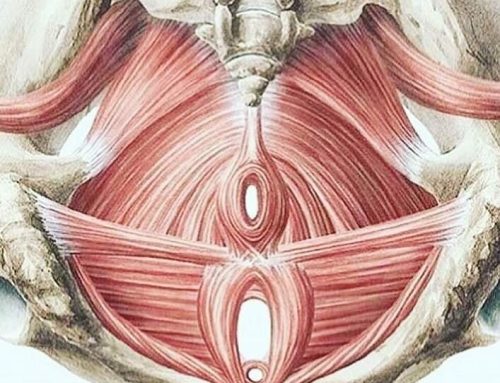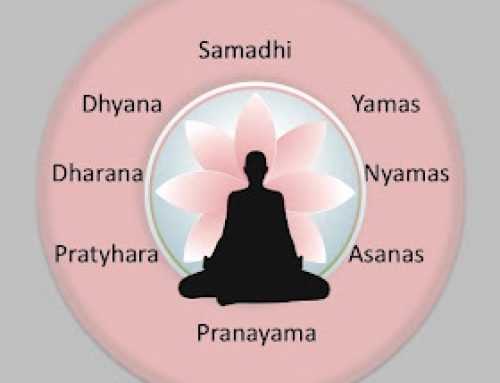Published in FemaleFirst.co.uk By Nadia Raafat - 2 July 2015
Yoga is an ideal pregnancy exercise: mindful, holistic and gently dynamic; its postures support the body through the various changes of pregnancy and prepare it for childbirth; its inward focus naturally encourages a deeper connection with your pregnancy and unborn baby and helps you develop the inner awareness and strength that will carry you through the child-birth experience.Whether you are practising Yoga in a class setting, with a DVD or on your own, these ten tips from Mother of 4, Birth Educator and Yoga and Mindfulness Teacher Nadia Raafat will help you make the most of your pregnancy practice.
1. Practise Yoga anytime during Pregnancy
Although Pregnancy Yoga can be practised between 14 and 42 weeks, you do not need to wait until them to practice yoga - especially if you were doing if before you became pregnant.However you may need to adapt or change your practice if it was a rigorous one. Avoid hot yoga altogether and substitute your dynamic Vinyasa Class for a more gentle nourishing practice. During the first trimester, gentle yoga can alleviate some of the overwhelming tiredness of the first 14 weeks and help you to adapt to the changes of pregnancy. Do inform your teacher you are pregnant and do listen to your body and only practice what feels nourishing and comfortable.
2.Discover Breath Awareness
Breath Awareness is at the Heart of Yoga. Practising it settles the mind, calms the nervous systems and relaxes the physical body. How able you are to stay with your breath during childbirth will also determine how the experience is for you. It is ideal to begin your practice with either sitting/lying breath awareness. If sitting, ensure you are comfortable and your hips are higher then your knees. Close your eyes and bring your attention to your breath. Watch your body as it breathes itself. Your mind will wander. That's normal. As soon as you notice it's wandered simply come back to the breath. The mind will keep wandering. That's OK. Keep returning to the breath. As you persevere, the mind will start to settle. Keep your awareness on your breath as you move into your posture work. Watch how the body expands on an inhalation and lets go on the exhalation. This is key for preparing for the experience of labour. Whether moving dynamically or holding a posture for 5 breaths, keep that gentle expansion, relaxation rhythm within the pose.
3. Your Belly is Your Centre of Gravity
Now that you are pregnant your womb is your centre of gravity and, as it expands to house your growing baby, it will determine how and what postures you practice. Develop your awareness of all the activity unfolding in your belly; your baby, your digestive system, your breath and your abdominal support. Integrate the abdominals into whatever posture you are doing to support the back and maintain tone. Avoid poses which compress, squeeze or put excess pressure on the abdomen. Practice open twists instead of closed twists and avoid poses which require you to lie on your belly.
4.Your Body is Your Best Teacher
In a pregnancy class all yoga poses are suitable for pregnancy (this is not the case in other classes). Whilst many pregnancy complications like oedema, heartburn and back ache are remedied by Yoga still every body is unique, as is every pregnancy, so let your body tell you what feels nourishing and enhancing and what feels compromising. If a posture or exercise doesn't feel right, simply adapt or change your pose. In this way you will develop and trust in the reliability of your body's feedback that will serve you well during Labour and Childbirth too.
5. Transition In and Out of Poses Slowly and Carefully
During pregnancy the body is lubricated by the hormone relaxin which softens ligaments which loosens joints. Sudden movements can leave the body vulnerable to injury. Protect your body by transitioning between poses with awareness and patience. - especially as your belly expands. Additionally blood pressure changes during pregnancy can mean transitioning through planes (lying, sitting, standing) can sometimes cause dizziness. Giving yourself plenty of time to transition will ensure you remain steady and balanced and avoid discomfit and injury.
6. Balance Your Practice
A good yoga practice is an even practice that brings balance to the body and mind. Make sure your sessions includes strengthening and toning work as well as mobilising work. Aim for a balance between forward bends, backward bends, lateral bends, twists, inversions and balances. This will leave the body refreshed and energised. The good news is that most classes and DVDs will do this for you.
7. Substitute Deep Inversions for Gentle Inversions
Unless you are a really experienced yogini, during later pregnancy it is better to avoid more challenging inversions like headstand and handstands and instead adapt or practice gentler inversions like supported shoulder stand and Legs Up the Wall Pose - an ideal pregnancy restorative pose instead.
8. Work Mindfully
Yoga practiced without presence is exercise.The mind bit is key to an authentic yoga practice. It will help you to develop inner as well as outer strength and flexibility. So choose to stay in the body, flowing with the rhythm of the breath and listening to your body's feedback as move through your practice. Punctuate your practice with plenty of restful periods of stillness and presence in either Mountain Pose or Adapted Childs Pose.
9. Don't be Afraid to Lie on Your Back
Listen to your body, as long as you feel comfortable, and not restricted in any way, you can practice yoga on your back until the 3rd trimester. When resting on your back either use some support beneath your knees or rest with your knees bent. This will help release the lower back. If at any point you feel uncomfortable or short of breath roll over onto your left side.
10. Balance the Posture Work With Rest and Relaxation
An ideal yoga practice integrates posture work with breath work and relaxation. After practice, when the energy is flowing and the body and mind are settled, is the ideal time to connect with your baby, listen to a yoga nidra or mindfulness meditation and give the body the space and time it needs to rest and restore itself. This is the powerful healing work of Yoga. Whilst you are pregnant your body is your baby's living environment so make it as pleasant and stress-free as possible a home to reside in. Yoga practised mindfully is a pleasurable experience and will enable you to enjoy being pregnant.
Nadia is the co-founder of Battersea Yoga Centre in SW London, a popular independent yoga and meditation centre and director of Becoming Mother; a Mindful Birth Education Program. She has helped hundreds of women to manage pregnancy stress and birth with confidence through her Becoming Mother Mindful Birthing Programme.
Nadia Raafat's Becoming Mother Yoga & Mindfulness DVD is available via:
http://www.birthease.co.uk/birthease_shop/Yoga-Mindfulness-for-Pregnancy-DVD.shtml
http://www.yogamatters.com/product/656/dvraafymin/yoga--mindfulness-for-pregnancy--birth.html
www.nadiaraafat.com
SHARE SHARE TWEET PIN
Read more: http://www.femalefirst.co.uk/parenting/yoga-and-mindfulness-nadia-raafat-840909.html#ixzz3hHz6T4Af






